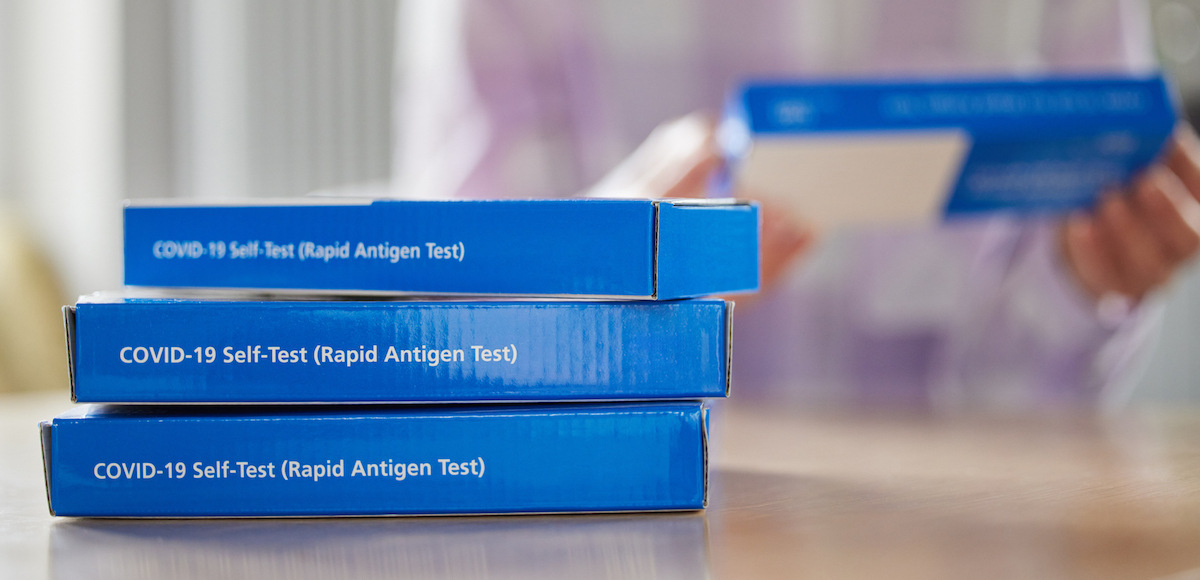<< Back
Free COVID Test Kits: What About the Expiration Date?

February 21, 2022
The original Omicron strain was leaving as the free at-home rapid antigen COVID-19 test kits were arriving, which only seemed fitting in the upside-down coronavirus world. But no one knows if, in fact, COVID is leaving for good, so do not take these free tests for granted.
Right now, we’re dealing with an Omicron subvariant, BA.2.
If you haven’t registered for the four freebies from the federal government delivered by the United States Postal Service, you might regret it in the fall or winter. If you’ve already received your tests, you should know how to interpret their expiration dates. These tests have a limited shelf life.
How Long Do the Test Kits Last?
Longer than they used to. In January 2022, up to 1 million test kids expired in a state-run warehouse in Florida, but the Food and Drug Administration countered Centers for Disease Control and Prevention guidance by extending their expiration dates. The FDA says it’s OK to add three months to any expiration date printed on a test kit box. (The BinaxNow test kit received FDA approval for an extended shelf life after tests showed the kit components were effective for up to 15 months.)
Beyond the extended expiration date, results are not reliable.
Can Extreme Temperature Affect the Tests?
Yes. Most manufacturers of at-home tests recommend storing the kits between 35 degrees and 86 degrees. The greatest threat now is delivery during cold winter months. A test kit left for a day or more in your mailbox at frigid temperatures could freeze the liquid reagent inside a cartridge that comes with the kit, invalidating the test results.
When to Use a Test Kit?
Here are three scenarios that the CDC recommends a test:
- If you have COVID-19 symptoms.
- At least five days after known or suspected close contact to COVID-19.
- Before and after travel.
What’s the Difference Between a PCR Test and an At-Home Test?
A polymerase chain reaction, or PCR, test is used by Hartford HealthCare and other healthcare systems as the most accurate COVID-19 test. It detects the virus’ genetic material, but results are often unavailable for at least 48 hours because samples must be sent to a laboratory.
If you’re experiencing no symptoms but seek a test before traveling or visiting an elderly family member, an antigen test is a more convenient, and often better, choice than a PCR test. An antigen test, also known as a rapid test, can detect an active viral infection without identifying it precisely. So its results can be less accurate than a PCR test. The advantage is the almost instant result.
“We tend to take a positive (at-home) test and interpret it as a real positive,” said Dr. Ulysses Wu, Hartford HealthCare’s System Director of Infection Disease and Chief Epidemiologist. “Where the disparity happens is really the negative at-home test. A negative at-home test doesn’t mean you are truly negative at this point.”
The antigen test can miss lower levels of infection, so if you test negative using an at-home kit, it’s a good idea to test again 24 to 48 hours later.
“It really depends on the test kit,” said Dr. Wu, “but I would follow the directions of the kit. That’s how it was studied and that’s how they produced it. I would not deviate from any of those instructions.”